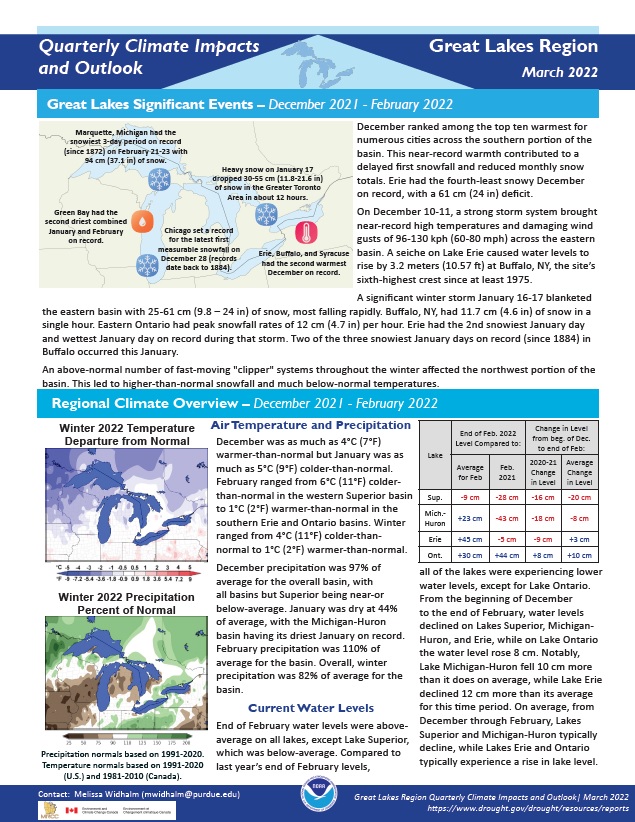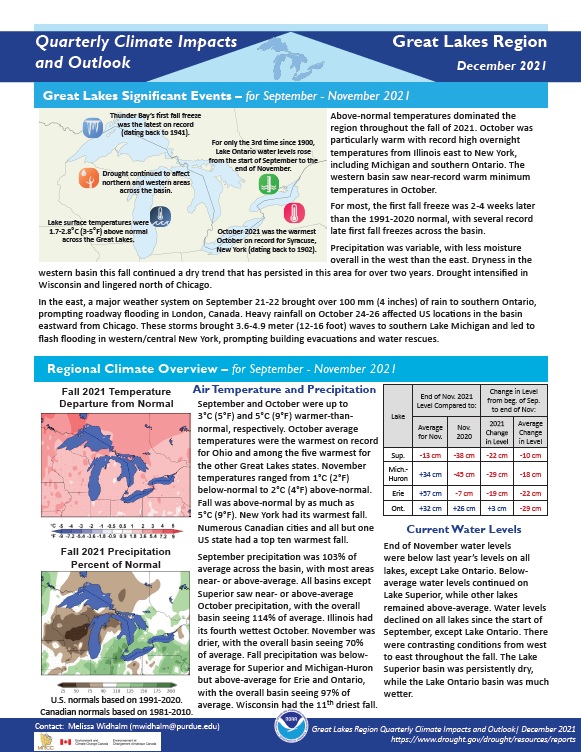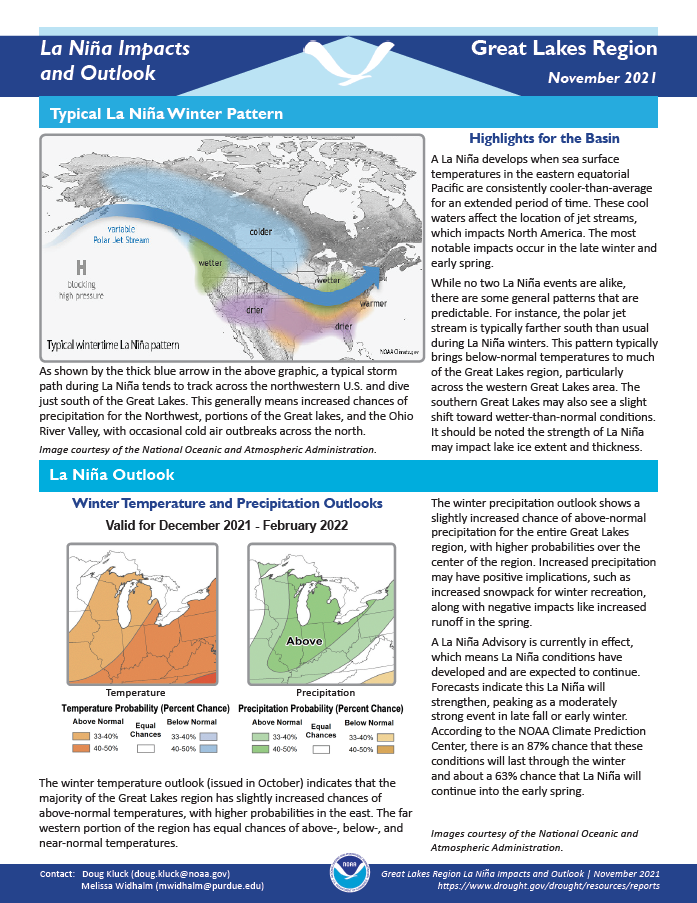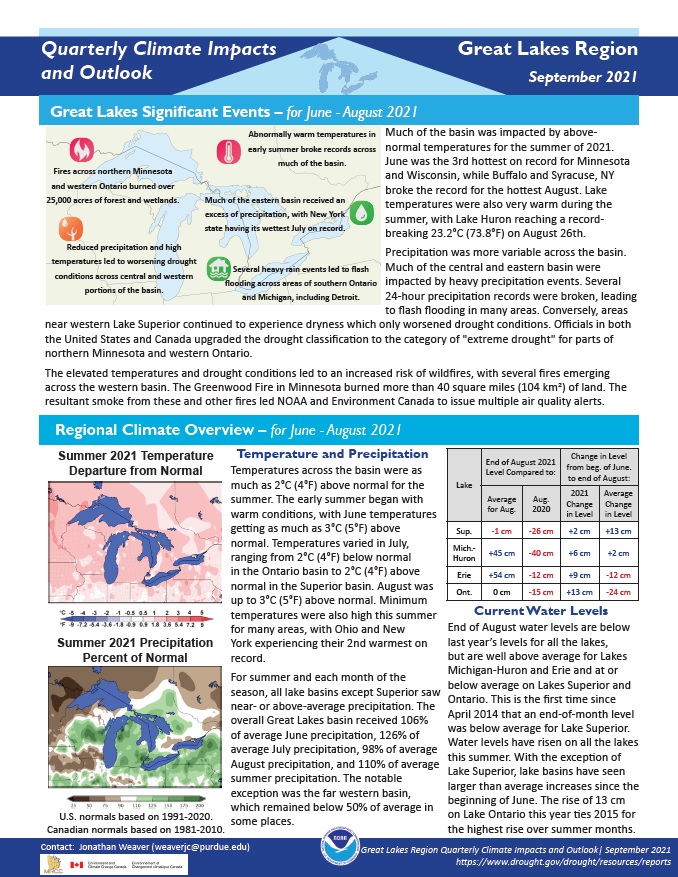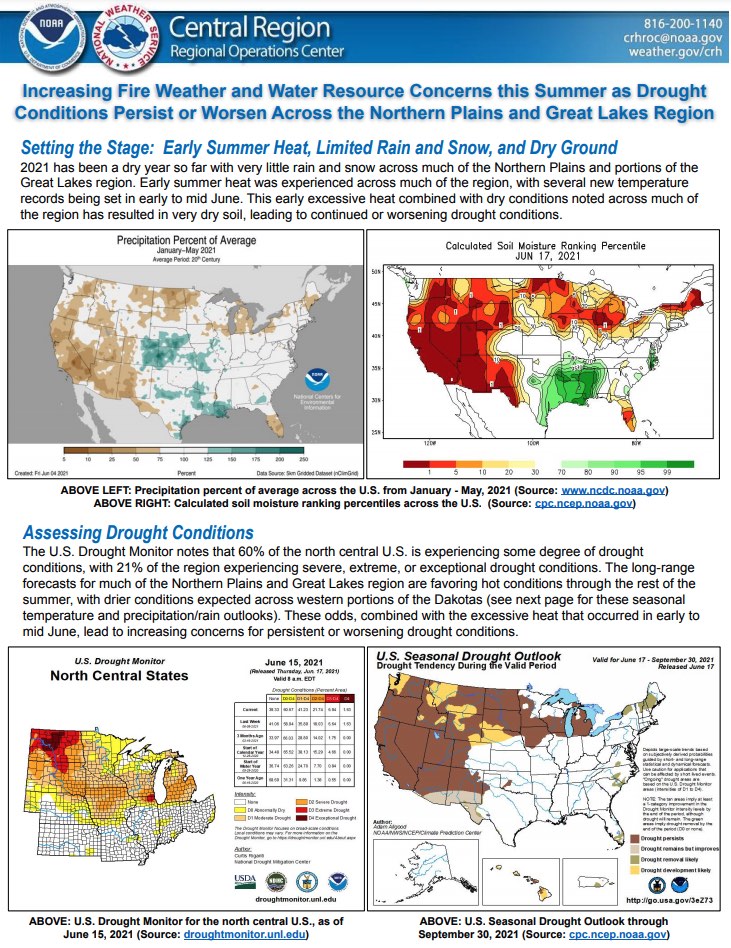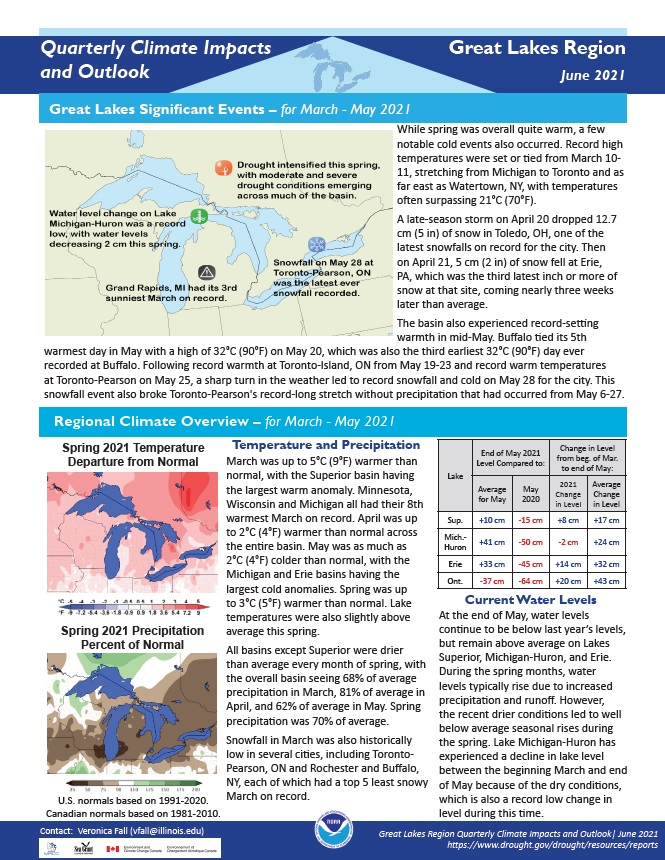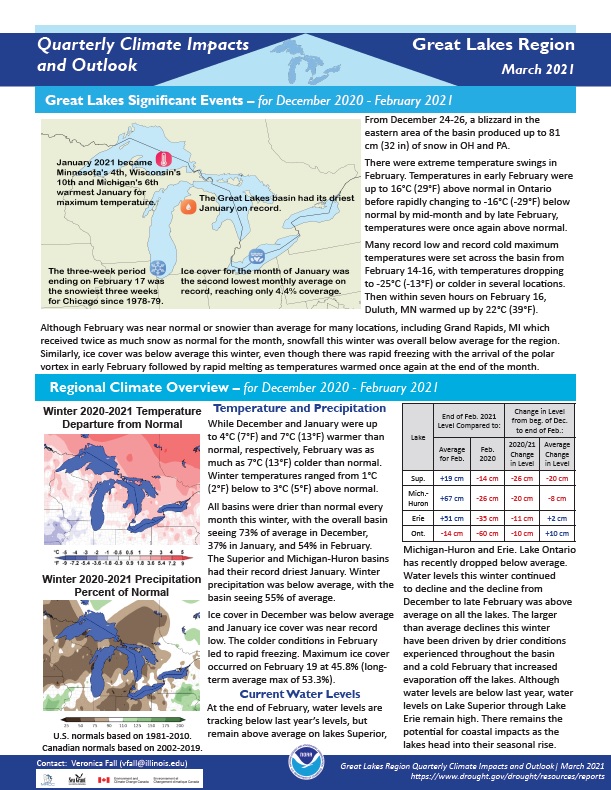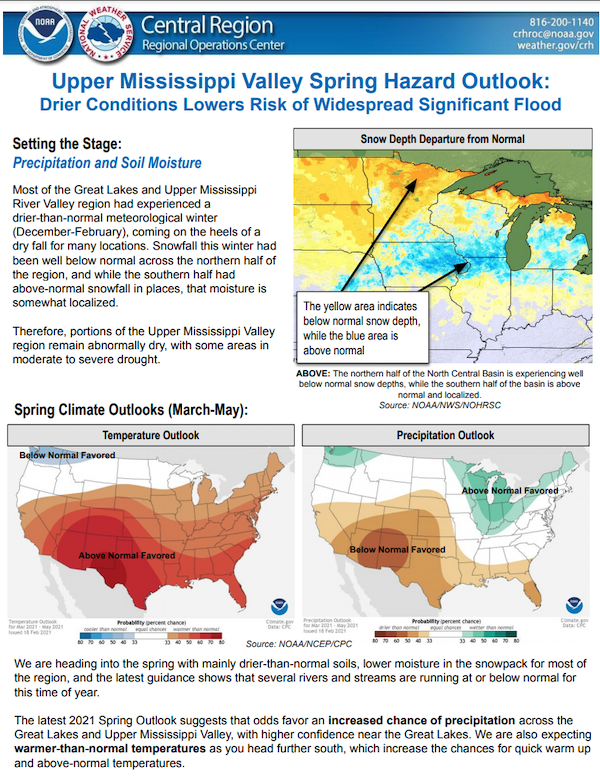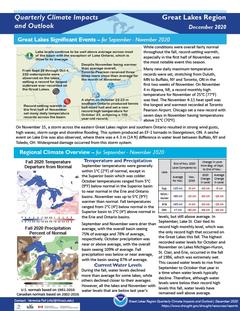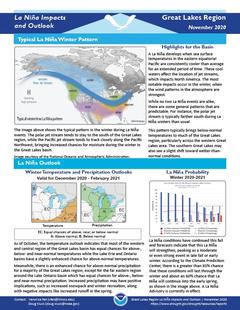Quarterly Climate Impacts and Outlook for the Great Lakes Region for December 2021 - February 2022. Dated March 2022.
Winter temperatures ranged from 4°C (11°F) colder-than-normal to 1°C (2°F) warmer-than-normal. Overall, winter precipitation was 82% of average for the basin.
Quarterly Climate Impacts and Outlook for the Great Lakes Region for September - November 2021. Dated December 2021.
Above-normal temperatures dominated the region throughout the fall. Precipitation was variable, with less moisture overall in the west than the east. Dryness in the western basin this fall continued a dry trend that has persisted in this area for over two years.
This handout provides information on the typical La Niña winter pattern; the La Niña outlook; potential winter and spring impacts; and comparisons of conditions during previous La Niña years for the Great Lakes region. Updated November 2021.
NOAA’s Regional Climate Services Program created these Outlooks to inform the public about climate impacts within their respective regions. Each regional report contains easy-to-understand language, and anyone can access them through the Drought Portal.
Quarterly Climate Impacts and Outlook for the Great Lakes Region for June - August 2021. Dated September 2021.
Temperatures across the basin were as much as 2°C (4°F) above normal for the summer. For summer and each month of the season, all lake basins except Superior saw near- or above-average precipitation.
The National Weather Service Central Region developed 2021 Summer Hazard Outlooks in coordination with the NOAA National Centers for Environmental Information, National Integrated Drought Information System (NIDIS), and National Water Center; U.S. Department of Agriculture; National Weather Service River Forecast Centers; and National Interagency Fire Centers' Geographic Area Coordination Centers. This outlook highlights the various Summer hazards that could occur and potential impacts across the Northern Plains and Great Lakes region.
Quarterly Climate Impacts and Outlook for the Great Lakes Region for March - May 2021. Dated June 2021.
Spring was up to 3°C (5°F) warmer than normal. Lake temperatures were also slightly above average this spring. All basins except Superior were drier than average every month of spring, with the overall basin seeing 68% of average precipitation in March, 81% of average in April, and 62% of average in May. Spring precipitation was 70% of average.
Quarterly Climate Impacts and Outlook for the Great Lakes Region for December 2020 – February 2021. Dated March 2021.
Winter temperatures ranged from 1°C (2°F) below to 3°C (5°F) above normal. Winter precipitation was below average, with the basin seeing 55% of average.
The National Weather Service developed 2021 Spring Hazard Outlooks in coordination with the National Centers for Environmental Information, National Integrated Drought Information System (NIDIS), U.S. Department of Agriculture, National Weather Service River Forecast Centers, and National Interagency Fire Centers' Geographic Area Coordination Centers. This outlook highlights the various Spring hazards that could occur and potential impacts across the Upper Mississippi Valley and Great Lakes.
Quarterly Climate Impacts and Outlook for the Great Lakes Region for September – November 2020. Dated December 2020.
While conditions were overall fairly normal throughout the fall, record-setting warmth, especially in the first half of November, was the most notable event this season. Fall precipitation was below or near average, with the basin seeing 87% of average.
Provides information on the typical La Niña winter pattern; the La Niña outlook; potential winter and spring impacts; and comparisons of conditions during previous La Niña years.
NOAA’s Regional Climate Services Program created these Outlooks to inform the public about climate impacts within their respective regions. Each regional report contains easy-to-understand language, and anyone can access them through the Drought Portal.


